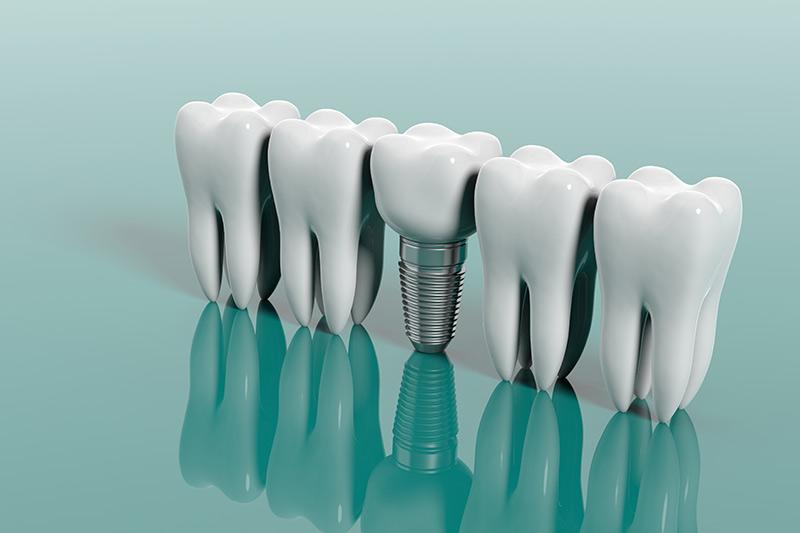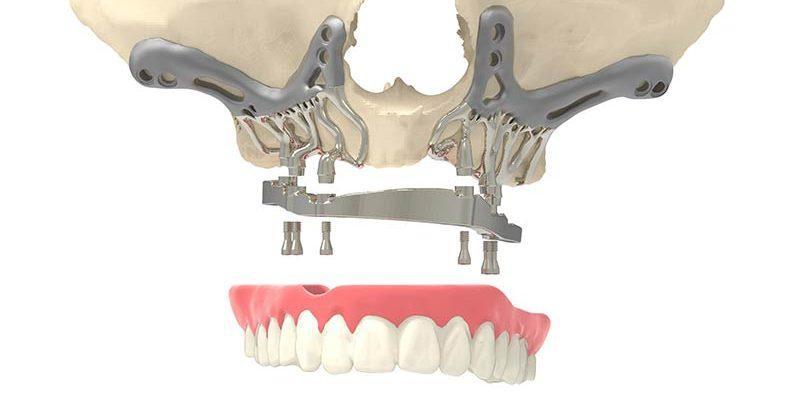Types of Dental Implants: Which One Is Right for You?
In the realm of dental restoration, dental implants stand out as a transformative solution for those seeking to reclaim their smiles and confidence. Imagine the power of a secure, natural-looking tooth that feels as if it has always been a part of you—a possibility that dental implants can fulfill. though, just as no two smiles are alike, neither are the types of implants available. From traditional options that have withstood the test of time to innovative solutions designed for specific needs, the world of dental implants offers a variety of choices to consider. In this article, we will explore the different types of dental implants, examining their unique features, benefits, and ideal candidates. Whether you’re looking to replace a single tooth, multiple teeth, or need a full mouth restoration, understanding your options is the first step towards making an informed decision about your dental health. Join us on this journey to discover which type of dental implant may be the perfect fit for your smile!
Exploring the Landscape of Dental Implant Options
When considering dental implants, familiarity with the diverse types available is crucial for making an informed decision. The most common options include:
- Endosteal implants: These are the most frequently used type,surgically placed directly into the jawbone and suitable for most patients.
- Subperiosteal implants: Ideal for patients with insufficient bone height, these implants are placed under the gum but above the jawbone.
- Zygomatic implants: Used in cases with severe bone loss, these implants anchor into the cheekbone rather than the jawbone.
- Mini implants: A less invasive option, mini implants are smaller in diameter and typically require less bone volume, making them a suitable choice for patients with limited jawbone.
Each type of dental implant comes with its advantages and specific indications. To help clarify your options, consider the following comparisons:
| Implant Type | Ideal For | Recovery Period |
|---|---|---|
| Endosteal | Typical candidates with enough bone density | 4 – 6 months |
| Subperiosteal | Patients with insufficient jawbone | 3 - 5 months |
| Zygomatic | Patients with notable bone loss | 6 – 9 months |
| Mini | Patients with limited jawbone volume | 2 - 4 months |
Taking the time to consider these options will assist in aligning your dental health goals with the most suitable treatment plan.

Understanding Endosteal Implants and Their Advantages
Endosteal implants are the most common type of dental implants, designed to be surgically inserted into the jawbone.This approach mimics the natural root structure of teeth and provides a solid foundation for dental crowns, bridges, or dentures. They are typically made of titanium, which is biocompatible and encourages osseointegration—the process by which the bone heals and grows around the implant, ensuring stability and durability. The versatility of endosteal implants allows them to support single teeth and also entire arch restorations, making them a suitable option for a wide range of patients.
Some of the advantages of endosteal implants include:
- Enhanced stability: They provide a strong anchor point within the jawbone.
- Natural function: Patients can chew and speak normally, similar to natural teeth.
- Long-lasting solution: With proper care, they can last a lifetime.
- Minimal bone loss: Endosteal implants help preserve jawbone density.
This type of implant may not be suitable for everyone,particularly those with insufficient bone density,but advancements such as bone grafting techniques can dramatically widen the candidate pool. It’s essential to consult with a dental professional to determine the best implant type based on individual needs and dental health.

The Benefits of Subperiosteal Implants for Unique cases
Subperiosteal implants offer a remarkable solution for patients who may not have sufficient bone height or density to support traditional endosteal implants. These implants are strategically placed beneath the periosteum, which is the membrane that covers the bone, making them particularly favorable in cases where bone grafting is not a feasible option. Patients with conditions like periodontal disease, significant bone loss due to trauma, or those who have worn dentures for extended periods can greatly benefit from this innovative approach. Some key advantages include:
- Minimally Invasive: The procedure typically requires less surgical intervention than traditional implants.
- Immediate Results: Patients can often receive their prosthetic teeth sooner, reducing the wait time.
- Preservation of Natural Bone: Subperiosteal implants help preserve the existing bone structure, minimizing further deterioration.
Moreover, the versatility of subperiosteal implants makes them suitable for diverse patient profiles. For those who have experienced severe resorption of the jawbone,these implants can be custom-designed to fit the unique contours of an individual’s anatomy,ensuring an effective and stable fit. This tailored approach not only enhances comfort but also contributes to the overall aesthetics of the smile. Here’s a quick comparison of subperiosteal implants with traditional options:
| Feature | Subperiosteal Implants | Endosteal Implants |
|---|---|---|
| Bone Requirement | minimal | Significant |
| Surgical Complexity | Less complex | more complex |
| Recovery Time | Shorter | Longer |

Evaluating Zygomatic Implants: A Solution for Bone Loss
Zygomatic implants present a revolutionary solution for individuals facing significant bone loss in the upper jaw. Unlike traditional dental implants that require sufficient bone volume for placement, zygomatic implants are anchored in the zygomatic bone (cheekbone), allowing for secure attachment even in cases where the jawbone has deteriorated. This innovative method not only restores functionality but also enhances aesthetic outcomes, making it a preferred choice for those who can benefit from it.
Opting for zygomatic implants involves a comprehensive evaluation of your dental and medical history. Candidates typically include:
- Individuals with severe bone loss who have fatigued other bone-grafting options
- Patients who seek an immediate solution for tooth replacement
- Those looking for a stable, long-lasting restoration without the need for extensive surgeries
It is indeed essential to consult with an experienced dental professional to determine if zygomatic implants are the right fit for you, as they require specialized training for placement. Most importantly,this option allows for a quicker return to function and confidence,substantially improving quality of life.

Making the Right Choice: Factors to Consider for Your Dental Implant Journey
Choosing the right dental implant involves several critical considerations that can significantly impact your overall satisfaction and the success of the procedure. First and foremost, it’s essential to evaluate the type of implant materials available, such as titanium or zirconia. Each material has its own set of benefits, such as biocompatibility and aesthetics. Additionally, look into the experience and qualifications of your dental professional. A skilled oral surgeon or periodontist will have a profound understanding of the nuances involved in the implant process and can guide you effectively based on your individual needs.
Another factor to consider is the health of your jawbone. Adequate bone density is crucial for the stable placement of implants. In cases where bone mass is insufficient, you may need supplementary procedures like bone grafting. Additionally, understanding the types of implants can aid in making the best choice. Here’s a brief overview:
| Type of Implant | Overview |
|---|---|
| endosteal | The most common type, placed directly into the jawbone. |
| Subperiosteal | located under the gum but above the jawbone, suitable for patients with minimal bone mass. |
| Zygomatic | Anchored in the cheekbone, used in complex cases of bone loss. |
Each option should be carefully assessed in relation to your unique circumstances. Lastly,don’t overlook the cost and time commitment associated with different types of implants,as these factors can influence your ultimate decision. Consulting with your dental care team about your lifestyle and long-term goals can help you feel more confident in your choice.
Future Outlook
As we’ve explored the diverse world of dental implants,it becomes clear that the right choice hinges on your unique dental needs,lifestyle,and personal preferences. Whether you’re considering the time-tested tradition of endosteal implants, the versatility of subperiosteal options, or the innovative approach of zygomatic implants, each type offers distinct advantages tailored to different circumstances. Engaging the expertise of your dental professional can illuminate the path forward, ensuring that your smile is not just restored, but brilliantly renewed. Remember, investing in your dental health is an investment in yourself—one that can led to improved confidence and enhanced quality of life.As you embark on this journey towards a healthier smile, keep in mind that the right implant is not merely a procedure; it’s a step towards a brighter future, where every smile tells your story.
